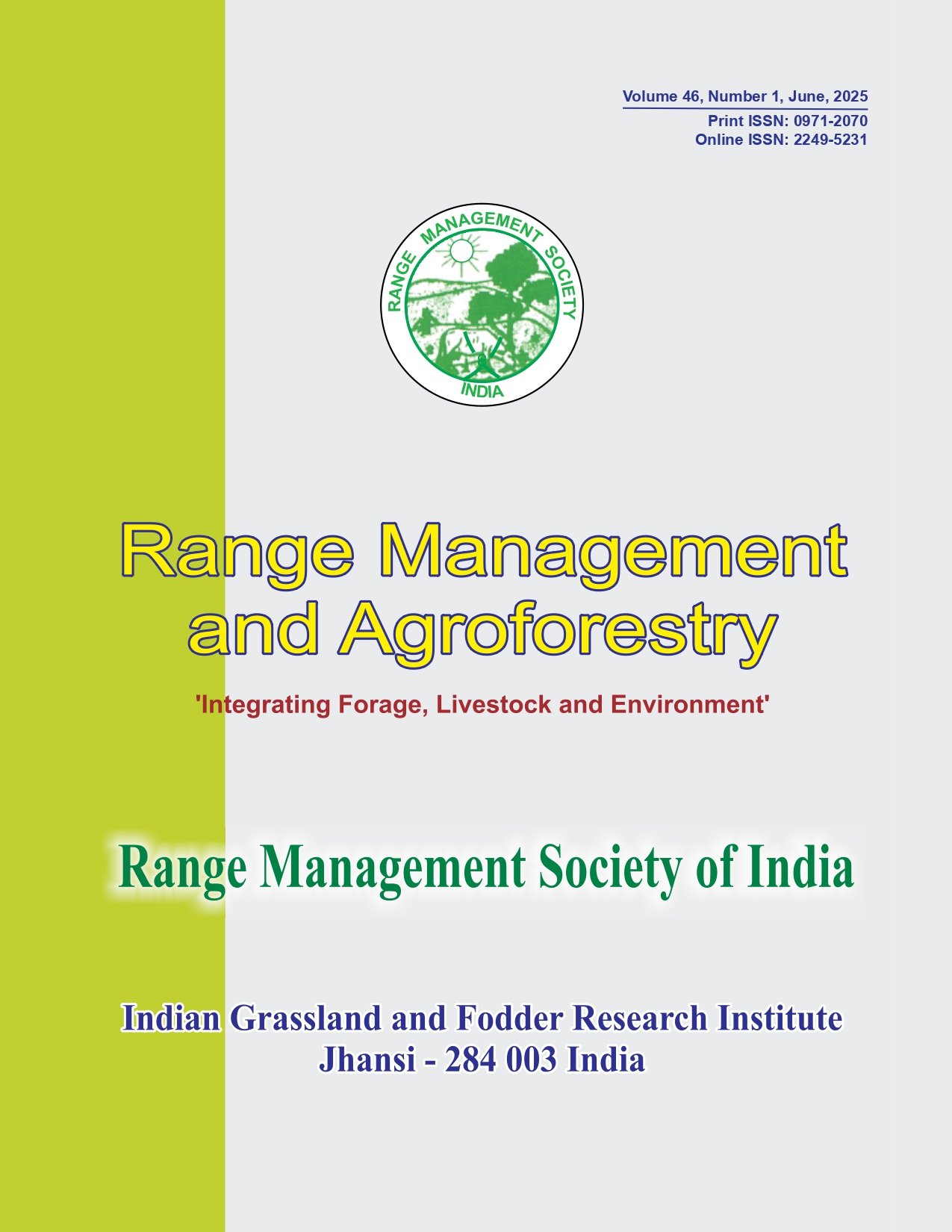Nutritive value of foliage from multipurpose tree species in drought-prone southern India
DOI:
https://doi.org/10.59515/rma.2025.v46.i1.12Keywords:
Foliage, tree species, crude protein, invitro true digestibility, forage nutritive valueAbstract
A study was conducted to assess the nutritional value of foliage of fourteen multipurpose tree species from the drought-prone southern semi-arid regions of India, with the aim of evaluating their potential as livestock feed during lean period. The total ash content in the foliage ranged from 6.25% in Tamarindus indica to 19.08% in Salvadora persica. Crude protein (CP) content varied significantly among species, with Morus alba exhibiting the highest CP (19.48%), while T. indica had the lowest (5.16%). The foliage of Ficus virens exhibited the highest carbohydrate content, whereas Leucaena leucocephala had the lowest. Crude fiber content was lower in Leucaena leucocephala, Moringa oleifera, Sesbania grandiflora, and Azadirachta indica compared to other species. With the exception of T. indica, all species had CP levels above 7%, meeting the minimum protein requirement for ruminal cellulolytic bacteria. Calcium content ranged from 75.64 mg in Gliricidia sepium to 189.89 mg in S. persica, while magnesium content varied from 7.23 mg in Gliricidiasepium to 38.80 mg in Crescentia cujete. M. oleifera foliage was particularly rich in iron (2.42 mg) and zinc (0.26 mg). Lignin content was high in A. indica, M. alba, S. grandiflora, and S. persica. Condensed tannin (CT) and total phenol (TP) contents varied significantly among the tree foliage. Total digestible nutrients (TDN), non-fiber carbohydrates (NFC) and forage nutritive value (FNV) also differed significantly among tree species. S. grandiflora had the highest TDN, while T. indica had the lowest. M. oleifera foliage showed the highest in vitro true digestibility (IVTD) and metabolizable energy (ME). The forage nutritive value (FNV) ranged from 14.51 in T. indica to 36.22 in L. leucocephala. Overall, foliage from these trees shows potential as an alternate nutritious fodder supplement during the lean period.
Downloads
Downloads
Published
How to Cite
Issue
Section
License
Copyright (c) 2025 G. SriManjula Reddy, B. Sahadeva Reddy, DBV Ramana, JM Upendra, B. Sahajadeva Reddy, Rajeswara Rao G

This work is licensed under a Creative Commons Attribution-ShareAlike 4.0 International License.







